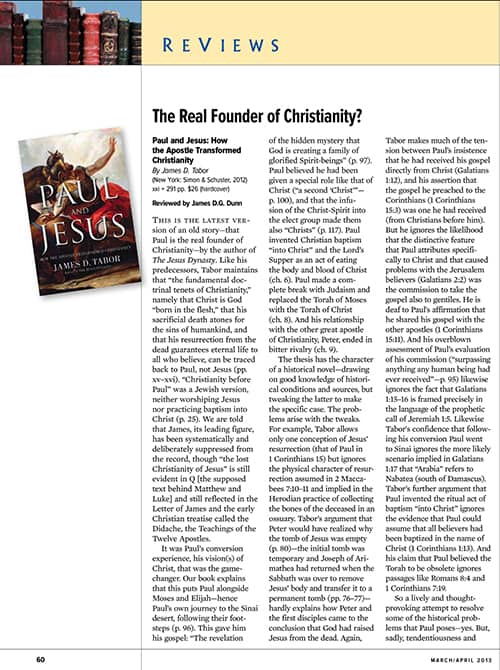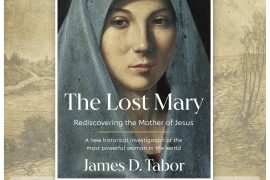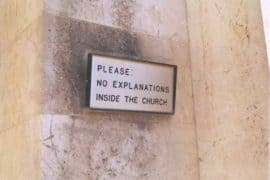So a lively and thought provoking attempt to resolve some of the historical problems that Paul poses–yes. But, sadly, tendentiousness and text-selectivity renders most of the thesis increasingly implausible.
James D. G. Dunn, who is the Emeritus Lightfoot Professor of Divinity in the department of theology and religion at Durham University in England reviewed my new book Paul and Jesus: How the Apostle Transformed Christianity in Biblical Archaeology Review (March/April 2013; 39:2, pp. 60-62). I greatly admire “Jimmy” Dunn, as many of us know him, and I have learned immensely from his work over the years–including his several volumes dealing with the Apostle Paul. I am honored to have his evaluation of my work. You can read the complete review on-line here.
The BAR editors have titled the review: “The Real Founder of Christianity?” The question mark is important since I never maintain that Paul founded Christianity, so much as transformed it–as my subtitle indicates. My hope is that by examining Paul we might be able to get a glimpse of the “Christianity before Paul,” that is in fact the title of the first chapter of my book.
Dunn begins with a fair summary of some of the main theses of the book which is always the mark of a good review. He then suggests, in his critique, that these theses mainly fail through a number of unfounded “tweaks” on my part of the historical sources. I thought my best response might be a consideration of those very points that Dunn ticks off as examples of this “tweaking” process.
1. He suggests that in fleshing out Paul’s view of a spiritual resurrection body (1 Corinthians 15) I ignore contemporary concepts of a more “physical” resurrection reflected in various Jewish sources, as well as the common Herodian period practice of “ossuary” burial, which seems to reflect an interest in collecting the bones of the deceased. He further suggests that only such a view of “corpse resuscitation” could account for the resurrection faith of Peter and the other early followers of Jesus who first discovered the “empty tomb.”
Careful readers of chapters 2 and 3 of my book will learn that such is hardly the case. In surveying the emerging history of ideas connected to “resurrection of the dead” within diverse strands of Jewish thought in late 2nd Temple times, I point out the variation in ways of imagining the idea of God “making live the dead.” There are indeed texts that sound overtly literal, with a reconstitution of a “physical” body, but just as many clearly envision the resurrection “body” as Paul does–and Jesus for that matter–in combating the “literalism” of his Sadduceean critics (Mark 12:18-27). What I argue is that the earliest view we have of the nature of Jesus’ resurrection is that of Paul, and that such a view was likely shared by Jesus’ first followers. I carefully work through the Gospel narratives reporting Jesus’ resurrection and argue that the idea of Jesus’ resurrection as signified by a revival of his flesh and blood corpse–wounds and all–was likely a later apologetic development. I think here we best stick with Paul, who is our earliest witness by several decades, and who likens the various “sightings” of Jesus by the apostles to his own experience of beholding the “heavenly Christ.”
What our various texts show is that both views were in competition, but by and large, given the immense problems with the “literal view” (i.e., those who had turned to dust or the “seas” giving up the dead in them), the position of Paul, even reflected in the mouth of Jesus in Mark 12, was more effective in answering skeptical objections. Whether the use of ossuaries was a reflection of a “literal” resurrection faith in the Herodian period is disputed. I think most experts in the field would argue the practice is more likely an accommodation to Greco-Roman culture. That would account for Sadducean tombs such as those of the high priestly families of Ananas or Caiaphus nonetheless containing these decorated bone boxes.
2. Dunn asserts that it is likely that Paul’s gospel received “by a revelation of Jesus Christ,” since he was shared with the other apostles, was in harmony with the message the Jerusalem group upheld–other than sorting out issues related to the matter of how to accept non-Jews into the group. This is certainly the view of the book of Acts, written decades after Paul, that mutes the dominant role of James until chapter 15 and reports a harmonious meeting of both mission and message between Paul and the Jerusalem apostles. Paul’s letters, I argue, show evidence of quite the opposite. Despite Paul’s strategic “support” of a Torah-based faith (“to the Jews I become as a Jew”) one would be hard-pressed to imagine those whom Paul sarcastically calls “the so-called pillars of the Church,” agreeing with his views expressed in 2 Corinthians 3 and Galatians 3-4 as to the fading, obsolete, secondary (“delivered by angels”) and temporary nature of the “Torah given through Moses.” Dunn is convinced that I “ignore” passages like Roman 8:4 and 1 Corinthians 7:19 in which Paul upholds the validity of the Torah, which is surely not the case. I devote an entire chapter to trying to flesh out the tension Paul reflects in his radically apocalpytic “already but not yet” understanding of “salvation history.” On one level the Torah remains, but it is also in the process of “passing away” so that one who truly understands the “freedom in Christ” is no longer “under the Torah.” This includes himself and other Jews–so long as one understands the sensitivities of weaker “brothers.” Here I have to agree with Alan Segal and others. As a Jew Paul is an “apostate” from the Torah, not because of his views of Jesus but because of his declarations about the Sinai covenant and its obsolescence. I do not find the arguments of Gager, Gaston, and Stendahl convincing, that Paul only says what he says about the Torah in the context of opposing those who would impose halachic rulings on his Gentile converts. Unfortunately we have little to nothing from the Jerusalem apostles themselves, and the book of Acts with its rousing Pauline speeches put in the mouth of Peter are always ringing in our ears. Perhaps the “right-strawy” epistle of James might be the best reflection of this non-Pauline stream of Christianity that is most readily available to average readers of the New Testament.
3. Dunn contends that I offer an “overblown assessment of Paul’s evaluation of his commission.” I have to stand pat on that one. This was the topic of my dissertation, Things Unutterable, at Chicago under Jonathan Z. Smith. Yes, Paul, like Jeremiah, believes he was chosen in his mother’s womb, which is surely special enough, but unlike Jeremiah, whose book reflects a lot about his self-understanding, Jeremiah claims nothing akin to Paul. After all, we have moved from the culture of the ancient Near East “seer” to that of the Greco-Roman Mediterranean world, in which a heavenly traveler like Paul, who says he was even taken to “Paradise,” and received countless mysteries and unspeakable revelations directly from Jesus Christ, is competing in a brave new world of cosmic battling. Whether his sojourn in “Arabia” was south of Damascus, or represented a trek to Sinai, as I suggest, the point he makes is that he had no reason to check his “gospel message” with those whom Jesus had chosen as apostles. By his own testimony it comes to him by apparition and he considers his knowing of Jesus as superior to any who had “known him according to the flesh.” I argue that Paul’s “baptism into Christ” reflects an understanding of cosmic mystical union that one would be hard put to imagine Cephas or James sharing, even if they did baptize “in the name of Jesus” akin to John the Baptizer and his disciples baptizing in his name. It would be even more of a stretch, in my view at least, to imagine them “eating the body” and drinking the blood” of their “Lord and Savior” in a ritual meal of corporate union with “Christ.” These are the distinctly Pauline elements that I argue in the book most contributed to a “transformation of Christianity.”
Tweaking refers to fine-tuning a system or product to bring it just a bit closer to what it needs to be. Given Dunn’s conclusion that my main theses fail due to “tendentiousness and text-selectivity” I gather that he in fact believes that much more than “tweaking” is at play here. Unlike most of the “Paul as founder of Christianity” books, mine is not a Paul-bashing approach. What I most intended to do was present “Paul in his own words,” in as complete a fashion as I know how, leaving it to the reader to decide what to make of the whole. For better or for worse, Paul remains the most influential person in human history and probably for this reason, given all that is invested therein, we will not come to easy agreement on many of these important issues that have divided the field of Pauline studies for the past 200 years.









Comments are closed.